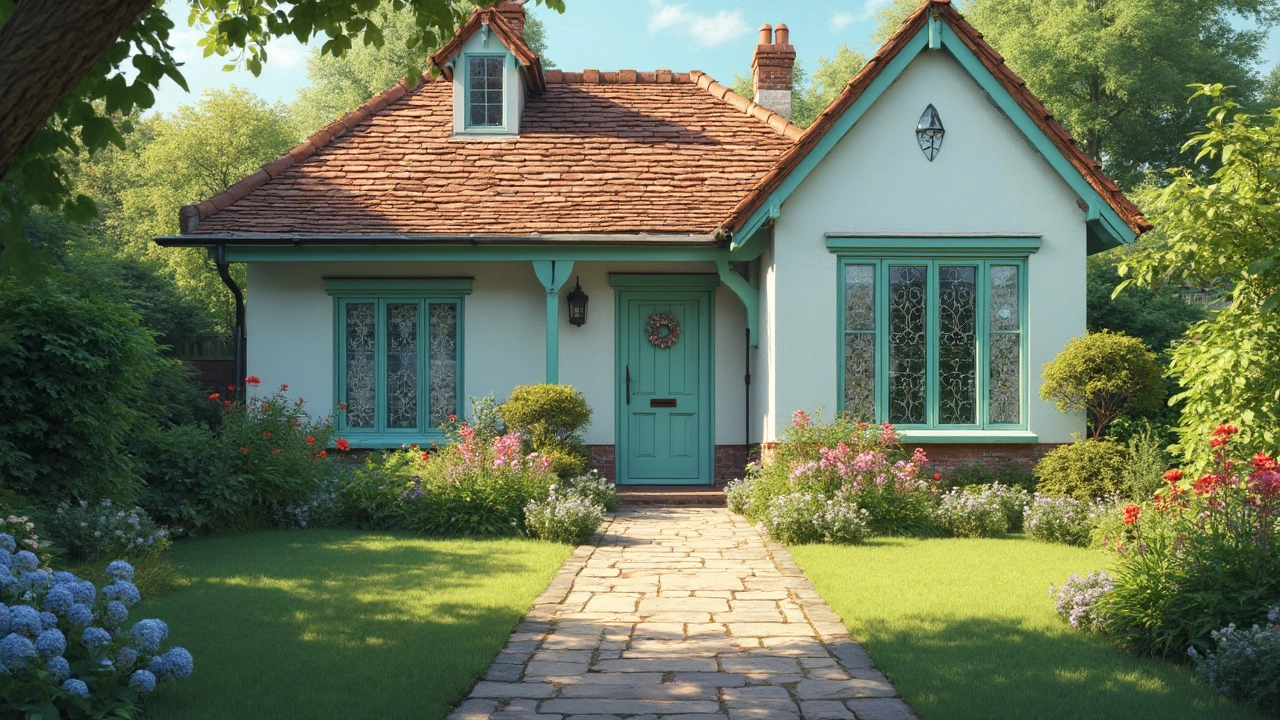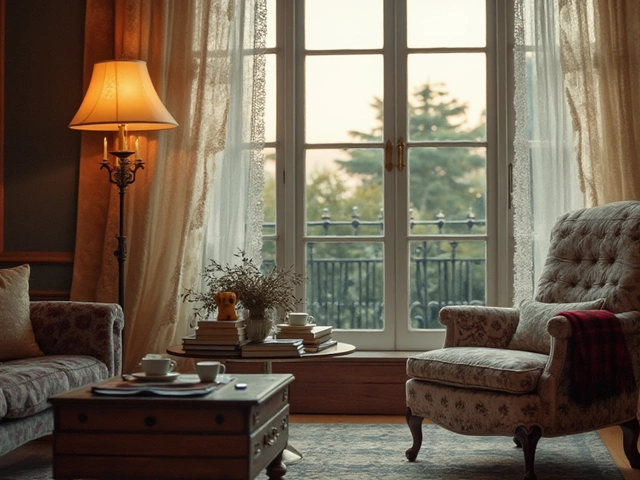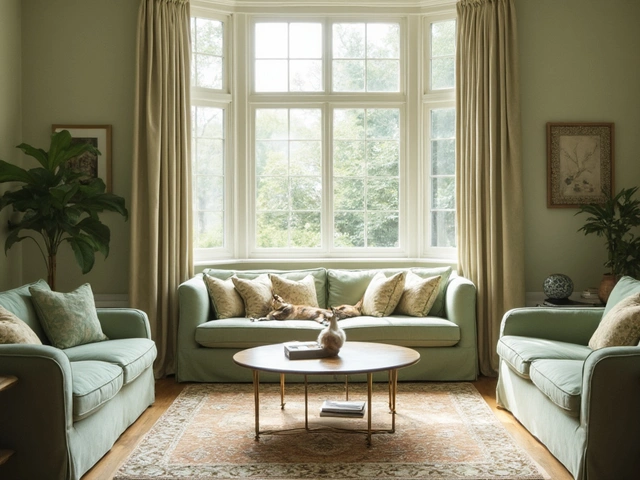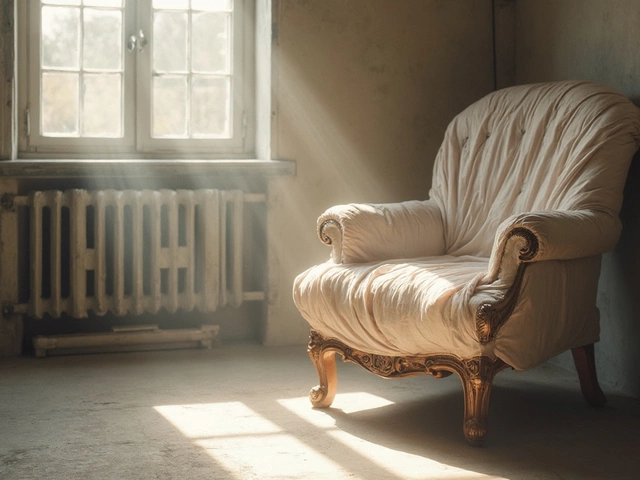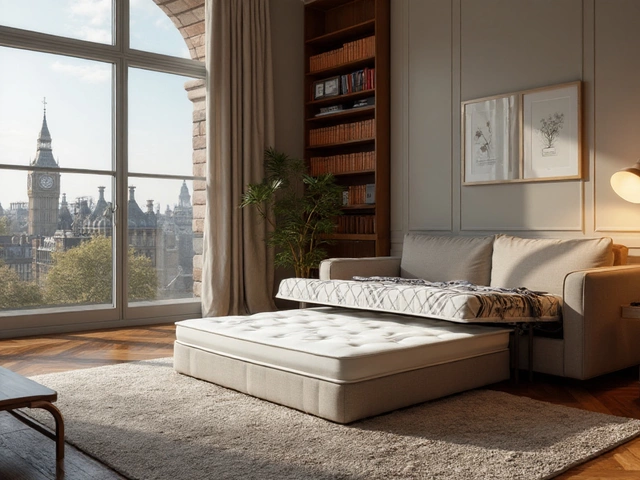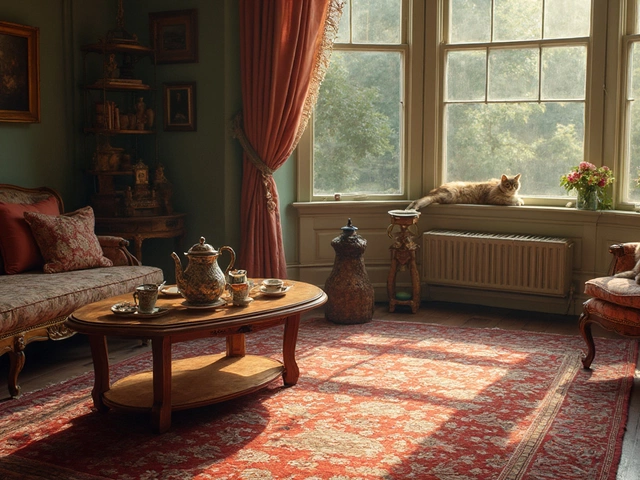Did you know that the color you choose for your home could actually up its selling price? Sounds wild, right? Yet, that's how much power color wields when it comes to making your place more appealing to potential buyers. The walls that surround us aren't just a backdrop; they create an emotional response that can sway someone from "meh" to "wow, let’s put in an offer."
Let's be real, not all colors are created equal when it comes to boosting a home's value. Neutral shades like grays and beiges often lead the pack. They're like the skinny jeans of the home world—always in style and universally flattering. But don't get it twisted; bold pops can work magic too. The trick? Balance. You want a home that's memorable without being overbearing.
But here's a golden nugget: each room has its own vibe, and the color you choose should match that. Kitchens love warm, inviting hues; think soft yellow or light green. Bathrooms appreciate cooler, calming shades—a soothing blue or serene gray might do the trick.
- Importance of Color in Home Value
- Popular Colors for Different Rooms
- Neutral Vs. Bold: What Sells?
- Color Psychology and Buyer Perception
- Tips for Choosing the Right Color
Importance of Color in Home Value
Ever heard the saying that first impressions are everything? That goes for houses too. The color of your home is one of the first things people notice. It sets a tone, creates a mood, and can make or break the initial excitement a potential buyer feels. It's no secret that a fresh coat of the right color can make all the difference between a quick sale and a house that lingers.
The deal with color is it often impacts perception. For instance, neutral tones like beige, whites, and grays create a blank canvas. They help buyers envision their stuff in the home. That's a big win for you as a seller. On the flip side, bold colors can add character and help your home stand out, but they should be used strategically.
A study by real estate experts suggested homes with certain colors could sell for thousands more. For example, homes with a blue bathroom tended to sell for $5,440 more than expected. That’s a nice chunk of change just for switching up your paint game! Check out this quick overview of how specific colors can affect your home's value:
| Room | Color | Potential Value Add |
|---|---|---|
| Bathroom | Blue | $5,440 |
| Kitchen | Light Yellow | $1,360 |
| Front Door | Black | $6,271 |
Now, why does this happen? It boils down to buyer psychology. Certain colors can make a room feel larger, cleaner, or more inviting. For instance, light colors often make spaces appear bigger, while darker shades can add coziness in larger rooms. Understanding the role of color psychology can mean tailoring your home's palette to maximize its value and appeal.
In short, choosing the right color scheme is not just about your taste. It's about what speaks to the heart—and wallet—of your potential buyers. So, when you're thinking of upgrading your home, remember these color tips. They might just be your ticket to a successful and profitable sale.
Popular Colors for Different Rooms
Whether you're selling your house or just wanting to freshen things up, choosing the right color can make a huge difference. Get it right, and the room can radiate warmth, vitality, or peace. Get it wrong, and it might just cost you that sale. Let's break it down room by room.
Living Room
The living room is the heart of the home, and its color should reflect that welcoming vibe. Most buyers love a neutral palette here because it's timeless and makes it easier to imagine themselves in the space. Think soft grays, beiges, or greiges. Want a bit of flair? Add accent walls with muted blues or rich greens to hint at character without shouting.
Kitchen
Your kitchen should feel lively yet inviting, which isn’t always an easy combo to nail. Warm colors like soft yellows or light terracotta can brighten the space and make it feel cozy. They create a nice setup, especially in homes with older buyers, who may appreciate a vintage touch.
Bedrooms
In bedrooms, the goal is to evoke relaxation. The once popular bold, daring hues have given way to softer tones today. Popular choices like pale blue or serene gray encourage tranquility—a key selling point if your potential buyers are families or frequent travelers.
Bathrooms
Consider a cool color in bathrooms. Blues and greens reign supreme here, not just for their fresh feel, but because cleanliness is comforting. If your bathroom can reflect natural, spa-like serenity, you’ve made it a mini oasis.
Dining Room
The dining room is where rich colors can shine. Deep red, if used right, can stimulate appetite and conversation. But dark greens and blues can also be stunning when balanced with the right furniture.
While these are popular recommendations, always consider your home's architecture and existing style. A color that's true to the house's nature will feel most authentic. It's like finding the right outfit for an occasion—fitting and comfortable, with a touch of wow!
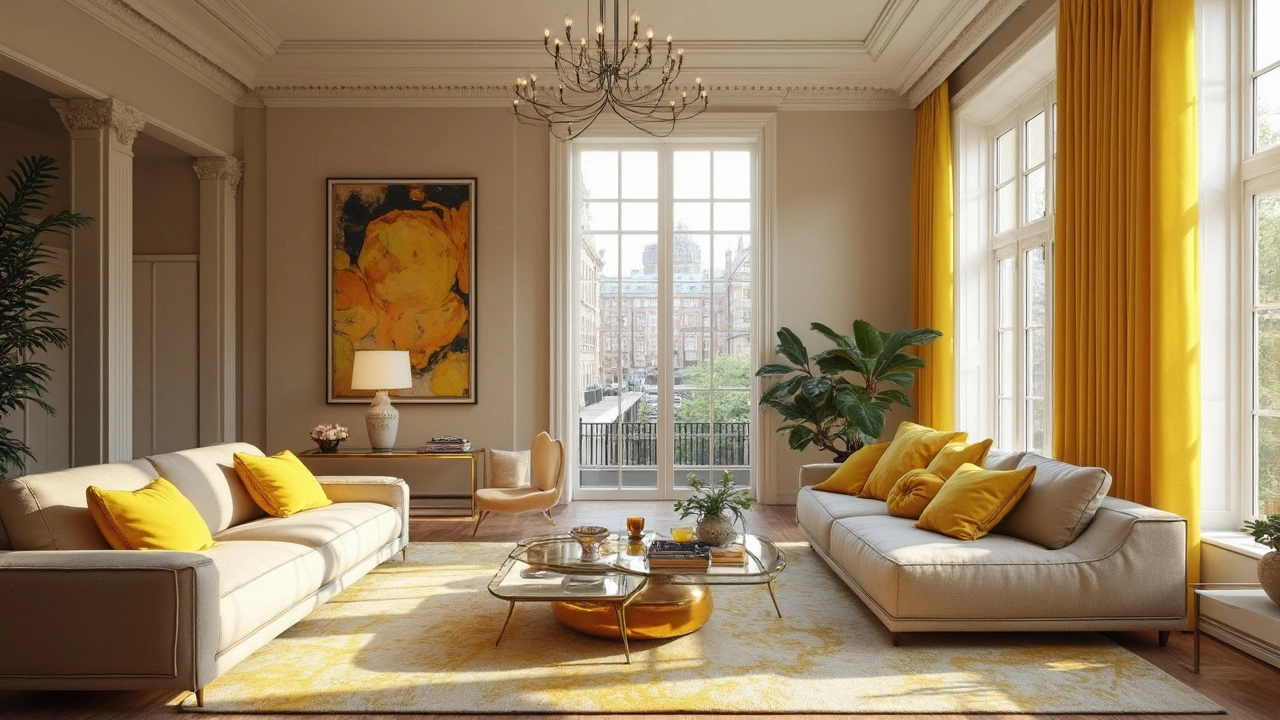
Neutral Vs. Bold: What Sells?
When it comes to maximizing your home's value, the debate between neutral and bold colors is like comparing apple pie to chocolate cake—each has its fans. So, what's the real scoop? Which choice will get buyers reaching for their checkbooks?
Why Neutrals Win Over Buyers
Neutrals are consistently the MVPs in home sales. Think of them as the safe bet. They create the look of a blank canvas, allowing buyers to envision their furniture and personal style. Colors like light gray, beige, and off-white are versatile and work for just about any decor style. They mimic the serene vibe of those dreamy homes we see on Pinterest.
According to a report from Zillow, homes with light taupe living rooms fetched around $2,793 more than anticipated. So, if you're aiming for the broadest appeal, neutrals are your go-to.
Making a Statement with Bold Colors
Now, bold colors aren't down for the count—they've got their charm. Used wisely, they make a house feel unique and help a room stand out. It all comes down to where and how you use them. A vibrant red can be eye-catching on a front door, while a dark navy might add elegance to a feature wall in a dining room.
Check this out: bold hues in the right context can make spaces feel more intimate or striking. A study mentioned in Real Estate Weekly found that homes with charcoal gray or jet-black bathrooms sold for $6,000 more than expected. The key takeaway? There's a certain allure in doing something a little different.
Striking a Balance
Ultimately, a mix of both worlds might set the stage perfectly. Use neutral tones for primary spaces like your living room or bedroom. Then, sprinkle in some bold accents with colorful rugs, artwork, or throw pillows. This approach creates intrigue and keeps spaces from feeling too plain.
Remember, it's like assembling a great playlist; a little pop, a little rock, and suddenly you've got a hit.
Color Psychology and Buyer Perception
Ever walked into a room and felt instantly relaxed or super energized? That's the magic of color psychology in action. Colors have this wild way of messing with our moods and perceptions, and when selling a home, it pays to use this to your advantage. Let's get into some specifics of how this works.
The Calming Influence of Blues and Greens
When it comes to creating a sense of calm and trust, blues and greens take the trophy. A soft blue or muted green in a bedroom or living space can make potential buyers feel at ease. It's like a visual lullaby saying, "Hey, you could totally chill here."
The Energizing Effect of Yellows
Want to add a bit of spark without overwhelming? Yellows can do wonders, especially in areas like kitchens or even offices. A pale yellow can evoke happiness and warmth, giving a sunny disposition to your home.
Trusty Neutrals: The Safe Bet
Okay, here's the deal: while bold colors have their perks, neutrals like grays, whites, and beiges are like the Swiss Army knife of home aesthetics. They help buyers envision their own furniture and style, making a home feel like a blank canvas. Neutral tones are universally appealing, and that's kinda the name of the game when attracting a wide pool of buyers.
How Buyers Perceive Space
Here's a fun fact: lighter colors make a space feel bigger. So if you're working with smaller spaces, these lighter hues can be your trusty ally to give an airy, spacious feel. Buyers may not know why a room seems larger—they just know they like it.
Bear this in mind—those wall colors can actually impact a buyer's decision. Choose wisely. Are you aiming for relaxed, energized, or somewhere in between? This isn't just decorating; it's strategic.
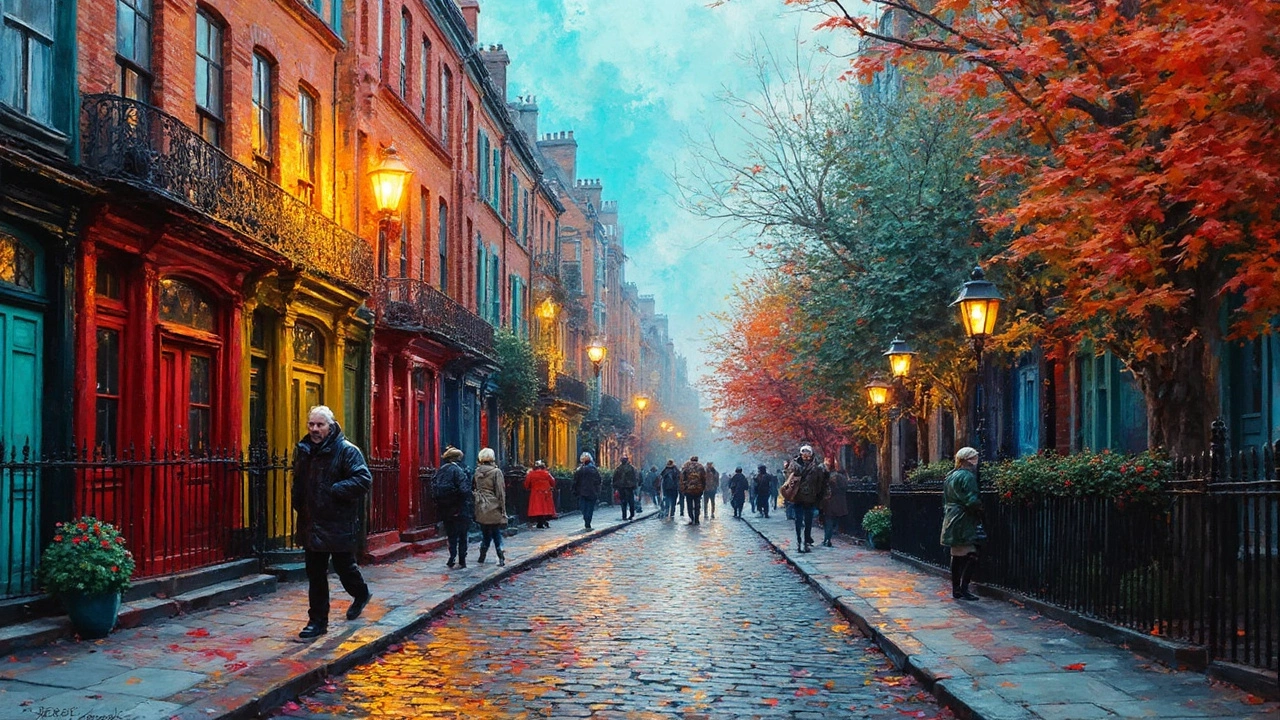
Tips for Choosing the Right Color
Choosing the right color for your home can feel like picking an outfit for a job interview—super important and slightly nerve-wracking. Whether you're gearing up to sell or just want your space to look its best, these tips will guide you through the maze of shades and hues.
Know Your Audience
First things first, think about who’s going to see your home. Are you sprucing it up to sell it? If so, look at what buyers in your area like. Neutral tones like grays and beiges are often a safe bet because they have a broad appeal and can make spaces look bigger and cleaner.
Consider Room Function
Each room has a job to do, and colors can help with that. Warm colors like yellow and orange can make kitchens feel cozy and inviting, while cooler ones like blues and greens have a calming effect, perfect for bathrooms or bedrooms. Think about what mood you want to set and choose your hue accordingly.
Size and Light Matter
Next up, size and lighting play a huge role. Small rooms often benefit from lighter shades that can make them feel more spacious. On the flip side, large rooms can handle darker or bolder choices without seeming cramped. Natural light can also alter a color's appearance, so test samples on your walls to see how they look at different times of the day.
Don’t Forget the Undertones
Colors come with undertones, basically the subtle hues that might not scream at you right away but will show up under certain lighting. Ever paint a room and find it suddenly looks more pink or green than you thought? That’s an undertone surprise. Know them, love them, or they'll spring on you when you're least expecting.
Test, Test, Test
It might seem obvious, but testing paint is key. Grab a few samples, paint some patches, and live with them for a few days. This can save you from a color decision you might regret faster than you can say "who chose this color?"
So, grabbing that perfect hue for your home color value isn’t rocket science, but it does take a little thought. Keep these pointers in mind, and you'll be on the road to a home that's both personal and appealing to those all-important eyes of potential buyers.
